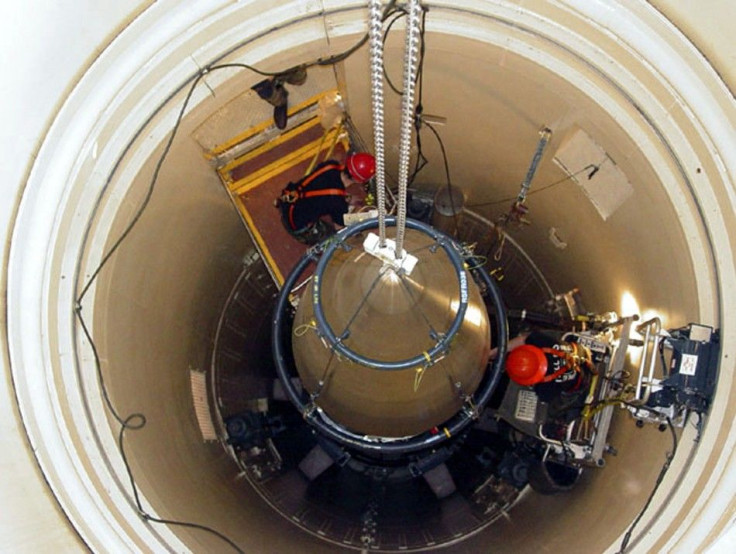Russia To 'Retaliate' If US Stores Weapons In NATO Territories; Putin Adds More Missiles To Arsenal

Russia is ready to retaliate if the United States will push through with its plans to station tanks and heavy weapons in NATO states. The U.S. is offering to store military equipment on the territory of its allies in Eastern Europe.
The U.S. proposal is expected to reassure countries worried about the possibility of being Russia’s next target after the conflict in Ukraine. Officials in Poland and that Baltic states said they were frustrated that NATO has not taken a more aggressive action to deter Russia. The officials had welcomed the news that the U.S. had offered to store weapons, reports Reuters.
However, other governments in the region were more cautious since they are afraid of getting caught in the middle of a new arms race between U.S. and Russia. “If heavy U.S. military equipment, including tanks, artillery batteries and other equipment really does turn up countries in eastern Europe and the Baltics, that will be the most aggressive step by the Pentagon and NATO since the Cold War,” said the Russian defence ministry official, General Yuri Yakubov.
The Russian official added that Russia will have no choice but to build up its military forces on the “Western strategic front.” Yakubov said the Russian response was more likely to include the deployment of Iskander missiles to Kaliningrad, a Russian exclave bordered by Poland and Lithuania, and the build-up of Russian forces in ex-Soviet Belarus.
Yakubov said Russia’s hands are completely free to organise “retaliatory steps” to strengthen Western frontiers. According to the Russian Foreign Ministry, it hopes that the situation in Europe will be prevented from turning into a new military confrontation to avoid dangerous consequences.
The Pentagon said the U.S. military was in the process of deciding where to store military equipment in Europe. The decision is part of a long-term effort to maintain equipment for forces in the region to facilitate U.S. rotational training with NATO allies.
Lt. Gen. Ben Hodges, commander of the U.S. Army in Europe told Reuters in December that the equipment set for the full brigade would be about 160 M-1 tanks and M-2 Bradley fighting vehicles including self-propelled howitzers.
Meanwhile, Russian President Vladimir Putin said Moscow was concerned about the anti-missile defence system stationed near its borders. He previously announced that Russia would add more than 40 intercontinental ballistic missiles to its nuclear arsenal.
“We will be forced to aim our armed forces… at those territories from where the threat comes,” said Mr Putin. U.S. Secretary of State John Kerry had expressed concern over the Russian leader’s missile announcement. He said no one wanted to see Russia sliding into a Cold War status.
Kerry told reporters at a news briefing that Putin could be posturing. Russia’s intercontinental ballistic missiles could reach a minimum range of more than 5,500 kilometres. The Russian president had given no more details about the missiles.
(To report problems or leave feedback on this article, contact: r.su@ibtimes.com.au)





















